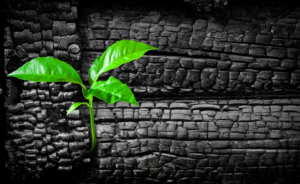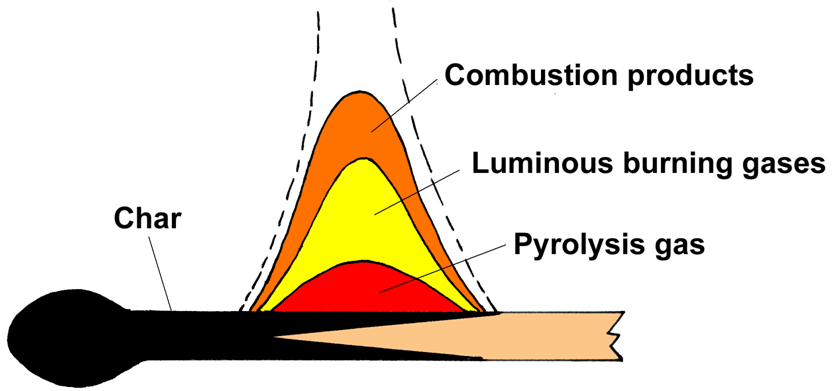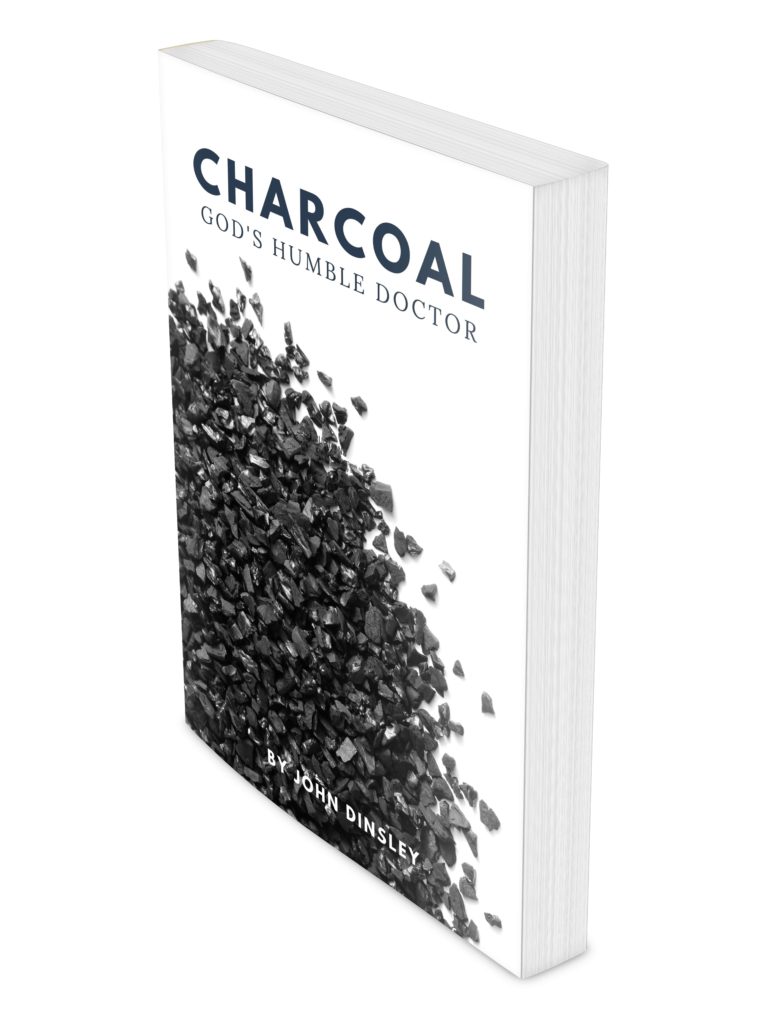What Is Biochar?
 Biochar, the GREEN Charcoal – the new face on plain black charcoal. As one researcher concluded “biochar [as we understand it] is at the end of the beginning and has the potential to play a dynamic role in the future of humanity and its societies.
The “beginning” revolves mostly around the discovery and initial investigation of the charcoal rich “Terra Preta” soils of the Amazonian rainforests of South America. The realization that these biochar-rich soils 1) maintain balanced moisture levels during wide climate changes, 2) improve air permeability in otherwise dense clays soils, 3) elevate cation exchange capacity in otherwise sluggish soils, 4) increase buffering of soluble organic carbon, 5) and all the while facilitating synergistic interactions with soil microbes, seems all to good to be true. But, there is more. 6) Like activated carbons some biochars have activity levels high enough to act as detoxifiers of poisoned, sterile or dying soils. As for its impact on the environment, it could actually be global. Biochar may even be part of the solution to man’s destructive impact on the thin veneer we call our atmosphere. Biochar may be able to somehow detoxify our earth ship’s air supply of excessive CO2 just as activated charcoal adsorbs CO2 in nuclear submarines and space stations.
So what is biochar?
Biochar is the relatively new word for charcoal derived from renewable carbon-based resources (biomass) such as wood, nut shells, corn stover, and switch grass, as opposed to non renewable fossil-based carbons such as coal and oil, rubber tires and plastics. Biochar is also that charcoal destined to be used primarily for soil enrichment.
More technically, biochar is “thermally-modified biomass.” Biomas is living matter, or dead or decomposing matter that was once living. Biochar is what is left over when the volatile material in biomass is cooked off, and the remaining carbon has been structurally changed, such that it does not biologically decay as all forms of biomass eventually do. This unique characteristic allows biochar to remain stable in the soil for long periods of time. This modification process combines pyrolysis and carbonization. Pyrolysis is a chemical breakdown of organic material into gasses that boil off. Carbonization is the chemical buildup of carbon atoms into solid structures which remain.
Biochar, the GREEN Charcoal – the new face on plain black charcoal. As one researcher concluded “biochar [as we understand it] is at the end of the beginning and has the potential to play a dynamic role in the future of humanity and its societies.
The “beginning” revolves mostly around the discovery and initial investigation of the charcoal rich “Terra Preta” soils of the Amazonian rainforests of South America. The realization that these biochar-rich soils 1) maintain balanced moisture levels during wide climate changes, 2) improve air permeability in otherwise dense clays soils, 3) elevate cation exchange capacity in otherwise sluggish soils, 4) increase buffering of soluble organic carbon, 5) and all the while facilitating synergistic interactions with soil microbes, seems all to good to be true. But, there is more. 6) Like activated carbons some biochars have activity levels high enough to act as detoxifiers of poisoned, sterile or dying soils. As for its impact on the environment, it could actually be global. Biochar may even be part of the solution to man’s destructive impact on the thin veneer we call our atmosphere. Biochar may be able to somehow detoxify our earth ship’s air supply of excessive CO2 just as activated charcoal adsorbs CO2 in nuclear submarines and space stations.
So what is biochar?
Biochar is the relatively new word for charcoal derived from renewable carbon-based resources (biomass) such as wood, nut shells, corn stover, and switch grass, as opposed to non renewable fossil-based carbons such as coal and oil, rubber tires and plastics. Biochar is also that charcoal destined to be used primarily for soil enrichment.
More technically, biochar is “thermally-modified biomass.” Biomas is living matter, or dead or decomposing matter that was once living. Biochar is what is left over when the volatile material in biomass is cooked off, and the remaining carbon has been structurally changed, such that it does not biologically decay as all forms of biomass eventually do. This unique characteristic allows biochar to remain stable in the soil for long periods of time. This modification process combines pyrolysis and carbonization. Pyrolysis is a chemical breakdown of organic material into gasses that boil off. Carbonization is the chemical buildup of carbon atoms into solid structures which remain.
You might better understand this process by burning a wooden match. As the flame moves down the matchstick charcoal is left behind. These remaining carbon structures are extremely random yet equally stable chemically. Consequently this biochar is quite indigestible even for microbes. So…? Biochar, as a soil amendment is very stable. Unlike other raw material like fertilizers, additives, composts, or manures, biochar is not assimilated, transformed, or broken down, but remains in the soil through successive generations of biomass. This dry land reef, if you will, acts as both a water and nutrient reservoir during times of extended draught. Does biochar actually benefit soils and increase crop production? YES! Can biochar rich soils decrease the dependency on commercial fertilizers? YES! Can biochars sequester CO2? YES! Can biochars help to retain essential soil nutrients from being leached out by rain or irrigation? YES! So, where can I get some? As we leave “the beginning”, the interest in biochar, helped along by such diverse interests as economics, climate control, giant pumpkin growers, organic gardeners, development workers, researchers… has created its first hurdle – finding some biochar to experiment with. Having found a source how does one know if it is a “good” biochar or not? Sources Currently, of all the potential sources, there are only three that are realistically accessible to the individual, experimental farmer, or research school interested in using biochar. One is purchasing conventional lump charcoal; the second is small-scale use of simple drum retorts; and the third is making your own char residuals from Top-Lit UpDraft (TLUD) gasifying stoves. Biochar from Lump Charcoal In a chapter entitled “Lump Charcoal from Commercial Sources” (H McLaughlin PhD, Paul S. Anderson PHD, Frank E. Sheilds, Thomas B. Reed PHD, All Biochars are Not Created Equal, and How to Tell Them Apart, August 2009) the author briefly explained the nature of charcoal briquettes. “Conventional lump charcoal was a widespread product prior to WWII, but has been replaced by charcoal briquettes after the war. Currently, most charcoal briquettes are a mixture of powdered devolatilized coal, a small portion of raw or carbonized sawdust, and intentional ash additives – intended to create the “complete charcoal cooking experience.” All that lovely white ash, indicating the coals are ready for cooking, is limestone, straight from the mine. Nowadays, lump charcoal is a boutique cooking fuel, which is gaining popularity and distributed almost anywhere outdoor cooking supplies are sold, including most hardware stores. It is generally made from clean wood scraps, such as residues from furniture making, and appears as solid lumps that still exhibit the grain of the original wood. While it is not inexpensive, lump charcoal is certainly affordable in the smaller quantities that a home garden might require to achieve recommended biochar levels in the soils of 3 to 10 weight percent of the soil mass in the root zone. However, an underlying issue remains: Is lump charcoal a good candidate for use as a biochar?” The author gathered a number of samples of popular retail lump charcoal and analyzed their respective activity levels – that is, how much adsorption capacity did each lump charcoal have. Two things were clear from the study. 1) not all charcoals/biochars are created equal. 2) the process of carbonization has a direct bearing on the respective activity levels. One of the selling features for cooking lump charcoals is the ability to light easily. To achieve this some producers cook the wood quickly at low temperatures (below 450°C) which leaves behind higher levels of low molecular weight combustibles which help the lump charcoal ignite more easily. But… These low molecular weight components compose most of what has been termed as “mobile matter”. According to the author this soluble mobile matter has two important features when reviewing biochars. “First, there is evidence that mobile matter leaches into the soil and provides a soluble carbon source, which can cause a short-term nutrient deficiency for the plants by stimulating soil microbe growth that competes with the plants for available nitrogen.” This initial draw down on certain soil nutrients can be crucial for some plants and could determine whether a crop will mature in time for harvest or not. The mobile matter level in lump cooking charcoal is a concern because the charcoal is expected to light without the addition of liquid charcoal starter. Consequently the carbonization process may be regulated so as to achieve more of these low molecular weight volatiles (mobile matter), which may be counterproductive when thinking of an ideal biochar. Second, the elevated amounts of mobile matter are likely to disappear within a single growing season and not contribute to the long-term properties of the soil. As such, the mobile matter portion in biochar is bought and paid for, but represents less long-term value as a soil amendment. Water and ash provide similarly reduced long-term value in the biochar, but most people recognize that situation and purchase accordingly. NOTE: As a work around to this potential draw down on soil nutrients CHARCOAL GREEN® BIOCHAR PLUS begins as a pure biochar then is inoculated with beneficial soil microorganisms and enriched substrates. You can see the RESULTS for your self. In addition to the Mobile Matter assay, Adsorption Capacity was tested because that is a crucial property of biochar that is created at the time of manufacture and is unlikely to improve over time. 15 randomly selected commercial lump charcoals were tested. In general, the best of the lump charcoals had adsorption capacities comparable with other wood biocarbons (not manufactured for the lump charcoal market). Unfortunately, the average lump charcoal mobile matter was over twice the average level of 10% for the biocarbons. Furthermore, it was apparent from extremely random percentages among the 15 samples that one cannot assume the mobile matter or adsorption capacities based on the relative bulk density of the end product. Eighteen samples of different lump charcoals produced by the same manufacturer were also tested for adsorption capacities to see how much lump charcoals might vary when produced under the same cooking process. The results showed that when different woods are cooked under the same process it results in a much more uniform range of adsorption capacity and relative density. Considering there was as much as a 700% (seven-fold) difference in adsorption capacities among the various samples of commercial lump charcoal, the authors stressed, these three main conclusions:
- Currently available biochars vary significantly in key properties
- Great attention should be taken to know the characteristics of any charcoals being added to soils, and
- Reports of the responses (whether favorable or unfavorable) of plants and soils to biochar applications are of questionable value without corresponding knowledge of the characteristics of the applied biochars.

John Dinsley
Born in British Columbia, Canada, John Dinsley has lived, and worked from South America to the North Pole, from Nova Scotia to Nepal. He is trained as a lifestyle counselor, teaches public health programs, home remedies workshops, and has operated a family care home. He and his wife Kimberly are the owners of Charcoal House LLC. They often travel together across the U.S. and internationally to conduct charcoal workshops. He is a carpenter by trade, has managed an organic market garden business, and volunteered in overseas development work. When he is not building, teaching or gardening, he enjoys writing.
Ron
Verified Amazon Purchase Read More
This book was an awakening for me. While reading it, I was seriously skeptical, but decided to give it a try. Ordered charcoal powder and capsules and I am happy to say I was amazed at the benefits of both. Excess gas and stomach discomfort, was eliminated by the capsules. I had been considering knee replacement surgery, but here again I was delightfully pleased. Made a poultice for my knee and within minutes the pain was gone, and it stayed gone until two days later. I am in the process of rebuilding knee cartilage with help from healthmasters.com.
God has given us everything we need, but that need doesn't include pharmaceuticals, which are man made poisons. Choose wisely.
PB
Verified Amazon Purchase Read More
There are lots of testimonials and valuable information in this book so for me it was worth buying. It does require time and some imagination depending on your medical situation. As a reference guide this book is very helpful. I like the fact that it can be used for treating food poisoning, acid indigestion, drug overdoses, snake bites, filtering water. The list goes on.
I have been experimenting with ac for the past few months. I just haven't figured out how to get rid of my sinus infection completely. I did get rid of my ear infections with tiny ac poultices that I made from tea bags that were cut down to size. I found the websites mentioned in this book to be full of testimonials also worth reading so I could get ideas on what else I can use ac for. Here are some links:
https://charcoalremedies.com/
http://charcoalhouse.com
JFamily
Verified Amazon Purchase Read More
This is a very good book to refer to if you want to supplement with activated charcoal for detox purposes or have it on hand as an antitode for accidental poisoning.
This is an excellent read and every home should have a copy of this very important book that could save your life in a emergency.
I give this book 5 stars all the way and a strong recommendation to buy.
Elevenofus
Verified Amazon Purchase Read More
I love this book and have read is through and then referred to it countless times. It has saved our family lots of money on doctor visits and traditional medications. We have learned from it how to treat some serious medical conditions (staph infection, brown recluse spider bites, red wasp stings, food poisoning etc.) and less serious conditions (stomach flu, eczema, stomach problems etc.) The book is fascinating as well as extremely useful and maybe even life saving!
This is an excellent read and every home should have a copy of this very important book that could save your life in a emergency.
I give this book 5 stars all the way and a strong recommendation to buy.
Krista Um
Verified Amazon Purchase Read More
John Dinsley has taken the wisdom and knowledge from his own experiences as well as the other books on the subject and condensed it into one book. Covers all uses internal and external. Explains what it is and isn't used for. How it works different forms and how it extends beyond health into many other areas. Shares historical background and uses of it. Clearly states that Charcoal is still a mystery to be revealed. Gets down to explaining what to do when you dont have the "store bought" on hand and how charcoal is everywhere just use your common sense. Valuable are all the stories interweaved throughout the book that illustrate its uses. Great book. A keeper in the library. One of the best holistic health care books on my shelf. It is thorough. It is enough detail without too much. Just right.This is an excellent read and every home should have a copy of this very important book that could save your life in a emergency.
I give this book 5 stars all the way and a strong recommendation to buy.
Previous
Next
You must be logged in to post a comment.


